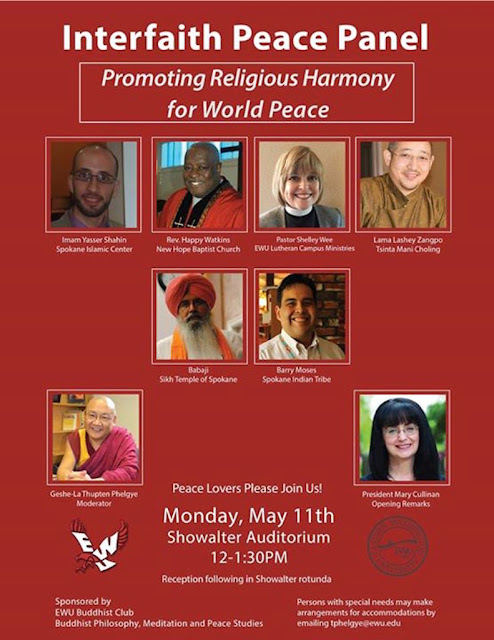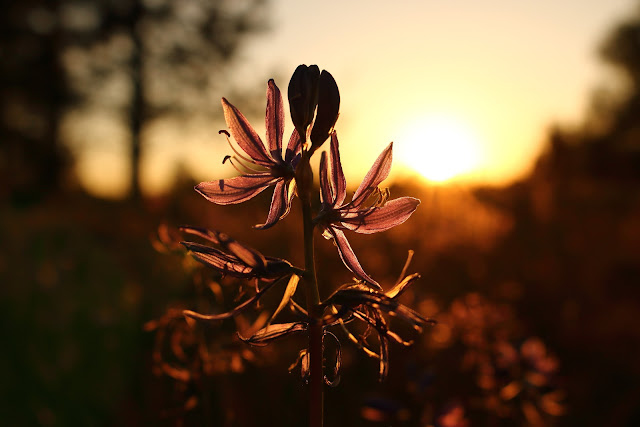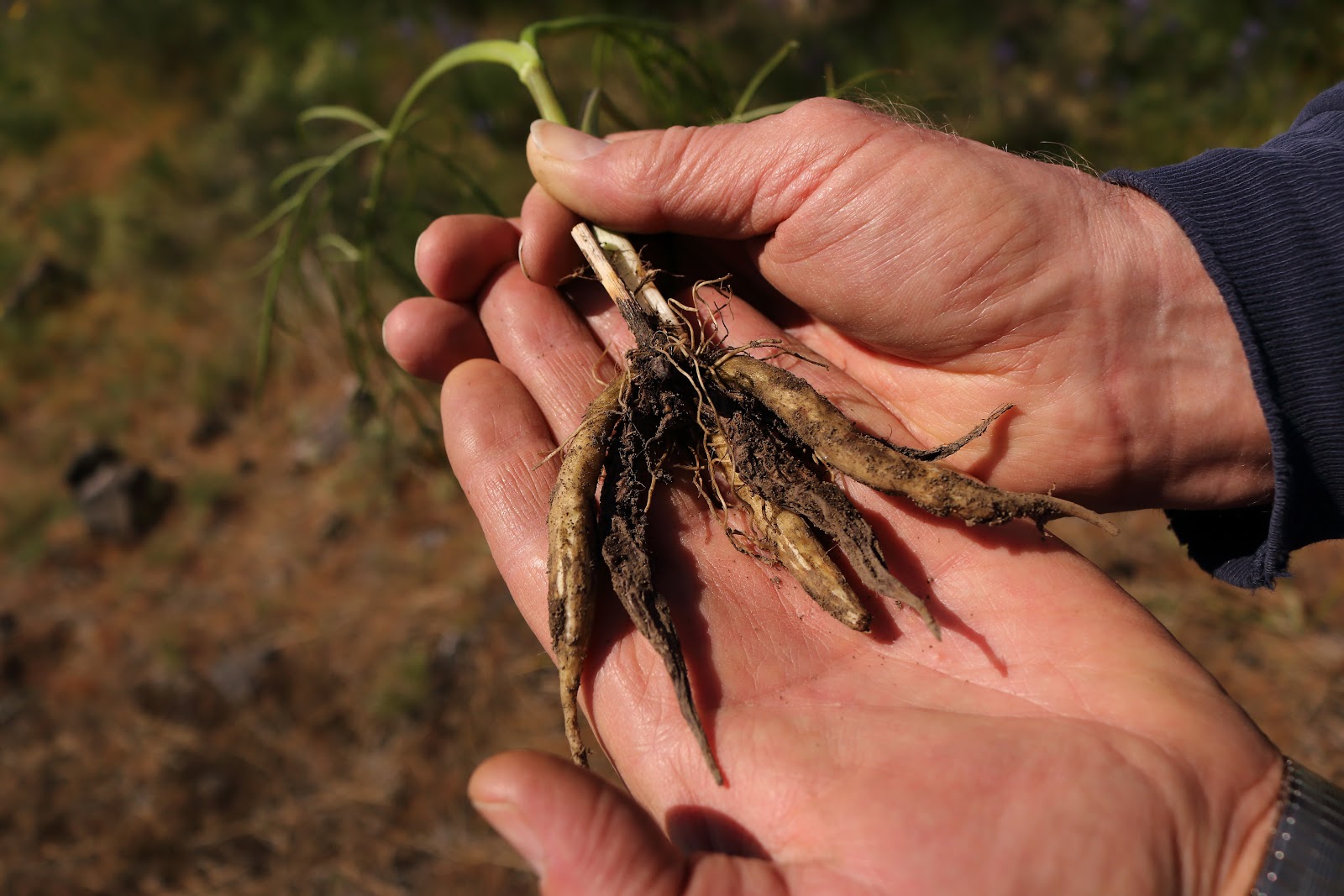My daughter Whitney is becoming a great artist. She gave me permission to post this painting that she created just this morning. I always tease that I taught her everything she knows, but in reality, she has far surpassed me in technical ability and creative soul.
Friday, May 15, 2015
Gratitude
I want to express my gratitude to my friend Nate who came out from Indiana to help with my recovery. He has been taking me to my appointments and making sure that I get out of the house. Yesterday we visited the Manressa Grotto in the Kalispel Country.
Interfaith Peace Panel
The Buddhist Club at Eastern Washington University organized an interfaith peace panel with representatives from Buddhism, Islam, Christianity, and indigenous spirituality. My friend Geshe Phelgye moderated the panel and invited me to participate. As always, it feels overwhelming to speak in a public forum where people might misunderstand my heart. I can only speak for myself, and not for anyone else in my communities.
The panelists were amazing. Every one of them impacted me in a positive way. I took notes and hopefully quoted each panelist as accurately as possible.
We watched a video before the event where Desmond Tutu was praising the current Dalai Lama. He said, “There is no way in which injustice, oppression, and evil can have the last word.”
Later, as Geshe-La introduced the panel, he said, “Prayer alone is not enough... Along with prayer, we need to engage with others to promote peace" and “Peace only happens when we communicate.”
Imam Yasser Shahin began his presentation by reciting part of the Quran. He said, “In the name of Allah, the most merciful, the most compassionate.” I have heard this phrase before, but in light of our discussion, I appreciated the reminder that God is both merciful and compassionate.
He said that saying hello to people will spread harmony more than keeping to oneself. “Peace starts with knowledge.” He encouraged the people to study other cultures and religions. He also said, “If you know that drawing the Prophet Mohammad offends many people, then you should stop drawing the Prophet Mohammad” and “It’s okay to debate, but we should refrain from arguing.”
The Reverend Happy Watkins told a touching story about meeting his mother in a bus. In front of all the people, she placed her hand upon him and prayed for the Lord to watch over her son. He said, “My mother had no idea what the future held, but she prayed to the future-holder.” His words reminded me of my own struggle after suffering a stroke. Likewise, I have no idea what the future holds for me. Lots of people make predictions and give advice, but only the Creator knows what my future will be.
He also said, “We have conquered the air and land, but we are not yet wise enough to displace war and hate” and “There’s hope for this Universe of the God we serve.”
Rev. Watkins spoke about the three institutions that give hope for our future: 1) The Institution of the Family, 2) The Institution of the Home, and 3) The Institution of the Kitchen Table.
Lama Lakshay said, “To hurt is not very pleasant.” He told a story about hurting a baby yak, and as a result of that hurt, the yak no longer trusted him.
Pastor Shelley Wee told a story about a young boy from her childhood who was kind of an outcast from the others. He was disliked and teased. Once day, he was singing, "Jesus loves me this I know, for the Bible tells me so." She recalled thinking, "I wish you wouldn't do that. People will only treat you worse."
Much later, she realized that the boy was part of her group in every way. He attended the same school. He came from the same racial background and the same socioeconomic class. He even attended the same church. She wondered how she could ever come to love people who were different, when she struggled so much with someone who was the same. I really appreciated the vulnerability and emotional honesty of her question.
Much later, she realized that the boy was part of her group in every way. He attended the same school. He came from the same racial background and the same socioeconomic class. He even attended the same church. She wondered how she could ever come to love people who were different, when she struggled so much with someone who was the same. I really appreciated the vulnerability and emotional honesty of her question.
After each panelist spoke, the audience got the chance to ask questions. Unfortunately, I didn't feel that the event allowed enough time to truly answer each question. For example, one man asked how our faith traditions could improve in promoting peace among the LGBT community. One or two people attempted a response, but I sensed something lacking.
This is not a critique of Geshe-La. My only hope is that we can continue to engage in courageous conversations in the future around these difficult topics.
This is not a critique of Geshe-La. My only hope is that we can continue to engage in courageous conversations in the future around these difficult topics.
Geshel-La, Imam Yasser Shahin, Rev. Happy Watkins, Lama Laskey Zangpo, Pastor Shelley Wee, and I.
Lama Laskey, Pastor Shelley, and I conversed briefly after the event.
Thursday, May 07, 2015
Arrowleaf Balsamroot
Every year I get the same pictures, but I love these plants. It always makes me happy to see them again after a cold winter.
Lomatium Macrocarpum
Lately, I have been curious if anyone still eats lomatium macrocarpum. I apologize that I don't know any of the traditional names for this plant, but many of our ethnobotany books claim that it's edible. Please let me know if you know anything about this root.
Sunday, May 03, 2015
Camas Therapy
My friend Stanton brought me to Drumheller Springs to see the camas in full bloom. I'm still not strong enough to actually dig the roots, but I didn't want to miss a visit with the flowers. Our short walk was my physical therapy for the day, but seeing the native plants was therapy for my soul.
La Terapia de Camasia
La Terapia de Camasia
Mi amigo Stanton me llevó a las Mantiales Drumheller para ver la camasia en su floración total. Aún no tengo fuerza como para excavar las raíces, pero no quería perder una visita con las flores. Nuestra caminata breve sirvió como terapia física, pero el acto de ver las plantas nativas me sirvió de terapia para el alma.
As far as I can tell, no one has every translated camas into Spanish. If anyone knows, please tell me, but for now, I think I'll call camas by an adaptation of its Latin name. In Latin, the plant is called cammassia quamash, so in Spanish, I will call it: la camasia.
Según puedo ver, nadie ha traducido la palabra camas al español. Si alguién lo sabe, por favor dígamelo. Pero por ahora pienso que llamaré la camas por una adaptación de su nombre latín. En latín, la planta se llama cammassia quamash. Por tanto, en español, la llamaré: la camasia.
The camas flowers will soon begin to wilt. The weather has changed so much; I think the flowers are several weeks early.
Pronto las flores de camasia empezarán a marchitar. El clima ha cambiado tanto; pienso que las flores han llegado temprano por varias semanas.
A ladybug in the camas flower.
Un ladybig entre la flor de camasia.
This plant is often called Indian carrot or yampa (perideridia gairdneri).
Frecuentemente, esta planta se llama "zanahoria indígena" o yampa.
From left to right:
Wild onion.
Indian carrot (yampa).
Camas.
Indian carrot (yampa).
De izquierda a derecha:
Cebolla silvestre.
Zanahoria indígena.
Camasia.
Zanahoria indígena.
The roots of Indian carrot.
Las raíces de zanahoria indígena.
Some of the bitterroots (Lewisia rediviva) were beginning to bloom.
Algunas de las raíces amargas empiezan a florecer.
Lomatium trinernatum with camas.
Lomatium triternatum con la camasia.
Lomatium trinernatum flowers remind me of tiny galaxies.
Las flores de lomatium trinernatum me parecen pequeñas galaxias.
Arrowleaf balsamroot (balsamorhiza sagittata).
El nombre de esta flor se traduce literalmente al español como "hoja flecha raíz balsámico."
The balsamroot flowers are just beginning to wilt.
Las flores de raíz balsámica están empezando a marchitar.
Subscribe to:
Posts (Atom)



























